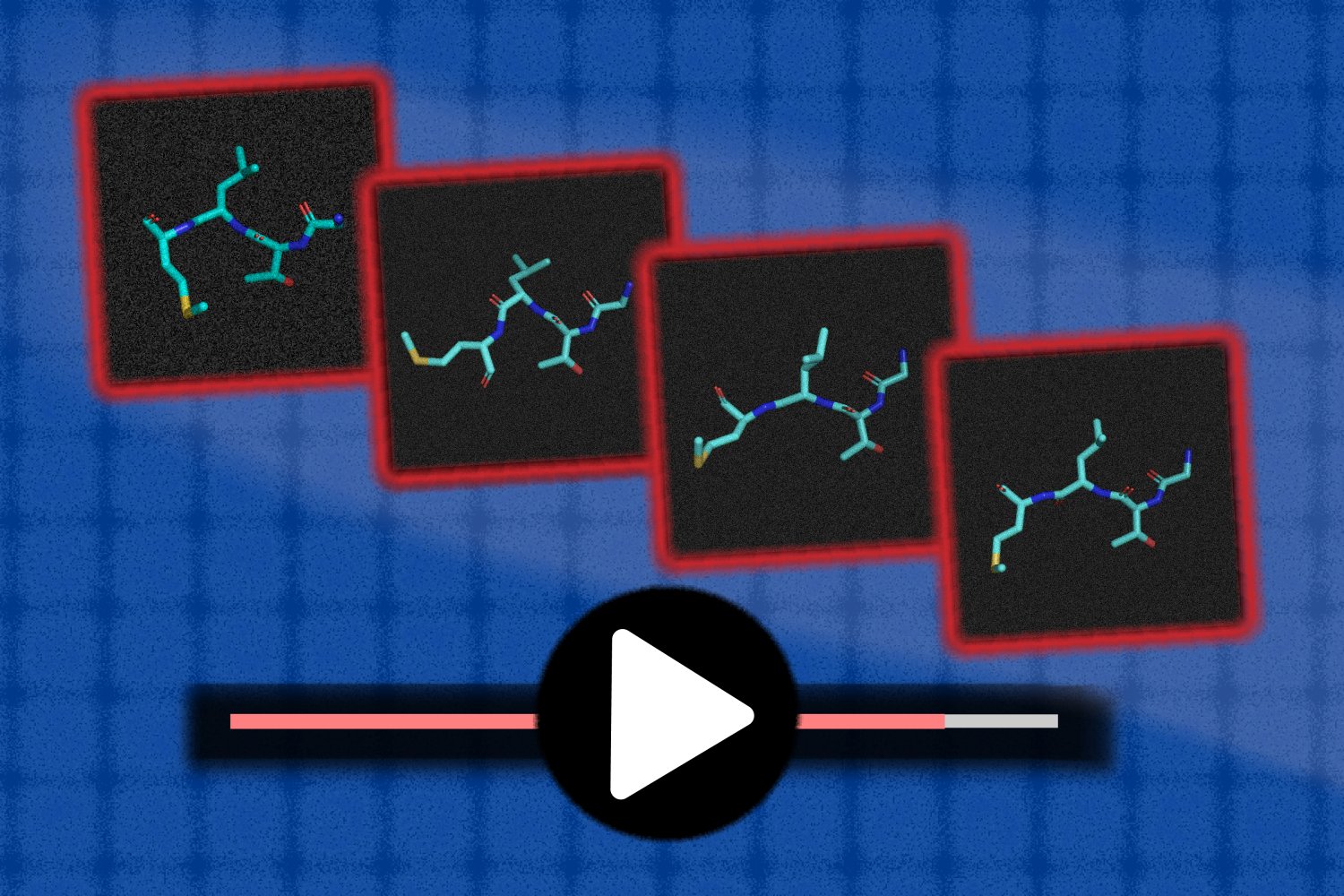MDGen: A New Way to Simulate Molecular Dynamics
As the capabilities of generative AI models have grown, you’ve probably seen how they can transform simple text prompts into hyperrealistic images and even extended video clips. More recently, generative AI has shown potential in helping chemists and biologists explore static molecules, like proteins and DNA. Models like AlphaFold can predict molecular structures to accelerate drug discovery, and the MIT-assisted “RFdiffusion,” for example, can help design new proteins. One challenge, though, is that molecules are constantly moving and jiggling, which is important to model when constructing new proteins and drugs. Simulating these motions on a computer using physics – a technique known as molecular dynamics – can be very expensive, requiring billions of time steps on supercomputers.
A New Paradigm in Molecular Dynamics
As a step toward simulating these behaviors more efficiently, MIT Computer Science and Artificial Intelligence Laboratory (CSAIL) and Department of Mathematics researchers have developed a generative model that learns from prior data. The team’s system, called MDGen, can take a frame of a 3D molecule and simulate what will happen next like a video, connect separate stills, and even fill in missing frames. By hitting the “play button” on molecules, the tool could potentially help chemists design new molecules and closely study how well their drug prototypes for cancer and other diseases would interact with the molecular structure it intends to impact.
How MDGen Works
Co-lead author Bowen Jing SM ’22 says that MDGen is an early proof of concept, but it suggests the beginning of an exciting new research direction. "Early on, generative AI models produced somewhat simple videos, like a person blinking or a dog wagging its tail," says Jing, a PhD student at CSAIL. "Fast forward a few years, and now we have amazing models like Sora or Veo that can be useful in all sorts of interesting ways. We hope to instill a similar vision for the molecular world, where dynamics trajectories are the videos."
MDGen’s Capabilities
The researchers say that MDGen represents a paradigm shift from previous comparable works with generative AI in a way that enables much broader use cases. Previous approaches were "autoregressive," meaning they relied on the previous still frame to build the next, starting from the very first frame to create a video sequence. In contrast, MDGen generates the frames in parallel with diffusion. This means MDGen can be used to, for example, connect frames at the endpoints, or "upsample" a low frame-rate trajectory in addition to pressing play on the initial frame.
Experiments and Results
In experiments, Jing and his colleagues found that MDGen’s simulations were similar to running the physical simulations directly, while producing trajectories 10 to 100 times faster. The team first tested their model’s ability to take in a 3D frame of a molecule and generate the next 100 nanoseconds. Their system pieced together successive 10-nanosecond blocks for these generations to reach that duration. The team found that MDGen was able to compete with the accuracy of a baseline model, while completing the video generation process in roughly a minute – a mere fraction of the three hours that it took the baseline model to simulate the same dynamic.
Toying Around with Protein Dynamics
Jing and co-lead author Hannes Stärk say that MDGen is an early sign of progress toward generating molecular dynamics more efficiently. Still, they lack the data to make these models immediately impactful in designing drugs or molecules that induce the movements chemists will want to see in a target structure. The researchers aim to scale MDGen from modeling molecules to predicting how proteins will change over time. "Currently, we’re using toy systems," says Stärk, also a PhD student at CSAIL. "To enhance MDGen’s predictive capabilities to model proteins, we’ll need to build on the current architecture and data available. We don’t have a YouTube-scale repository for those types of simulations yet, so we’re hoping to develop a separate machine-learning method that can speed up the data collection process for our model."
Conclusion
MDGen presents an encouraging path forward in modeling molecular changes invisible to the naked eye. Chemists could also use these simulations to delve deeper into the behavior of medicine prototypes for diseases like cancer or tuberculosis.
FAQs
Q: What is MDGen?
A: MDGen is a generative model that simulates molecular dynamics, allowing for the prediction of molecular structures and the design of new molecules.
Q: How does MDGen work?
A: MDGen generates frames in parallel with diffusion, enabling the simulation of molecular dynamics more efficiently.
Q: What are the potential applications of MDGen?
A: MDGen has the potential to accelerate drug discovery, improve the design of new molecules, and enhance our understanding of molecular behavior.
Q: What are the limitations of MDGen?
A: MDGen lacks the data to make immediate impact in designing drugs or molecules that induce the movements chemists will want to see in a target structure.











